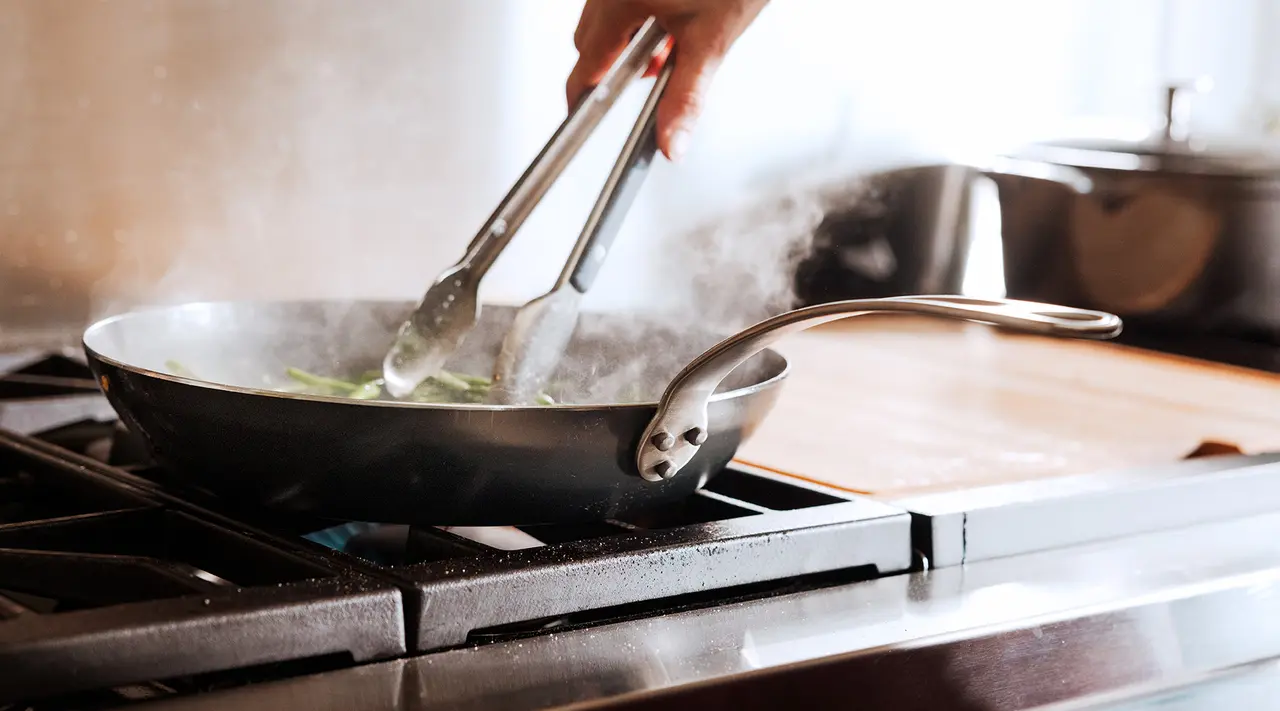Versatile, lightweight, and—most importantly—easy to clean, non stick pots and pans are a cookware staple for a reason. With that said, plenty of people simply prefer uncoated cookware, either because they want something a bit longer-lasting or because they want to use their pan in the oven or over high heat.
If you’re one of those people, this guide is for you: each of these non coated, non stick alternatives offers a comparable—if not identical—cooking experience, as well as similarly quick and easy clean-up. From stainless steel to enameled cast iron to carbon steel, you’ve probably even got one of these on hand already.
Carbon Steel
Well-seasoned carbon steel is one of our favorite swaps for non stick cookware. Once seasoned, carbon steel repels water and oil nearly as effectively as traditional non stick cookware, providing a similarly slick cooking surface. It’s also a great option if you love the lightweight feel of non stick cookware—for example, our 10” Carbon Steel Frying Pan weighs just half a pound more than our 10” Non Stick Frying Pan.
What’s more, carbon steel is even more durable than non stick cookware (even high-quality non stick cookware). And where there’s not much you can do to salvage a badly scratched non stick pan, carbon steel is virtually indestructible: pretty much any issue, from rust to damaged seasoning, can be solved by scrubbing and reseasoning your pan.
Enameled Cast Iron
The glossy interior of your favorite enameled cast iron pan isn’t just for show—it also offers an impeccably smooth cooking surface that doesn’t require any special maintenance or seasoning, and is relatively easy to clean.
The one (relative) downside is that, similar to traditional non stick, enamel coating is somewhat delicate, meaning sharp-edged metal utensils and abrasive sponges like steel wool can cause damage. However, unlike non stick, you can safely use enameled cast iron in the oven and over high heat without damaging the glaze.
Stainless Steel
At first glance, stainless steel cookware may seem like a weird item to include on a list of non stick cookware options—and you’re not entirely wrong, stainless steel can be pretty stick-prone. But hear us out: if you know how to prepare and cook with stainless steel properly, these can actually function as a decent non stick alternative.
Before cooking items like eggs or fish in stainless steel, make sure to temper—i.e., bring your ingredients to room temperature—first, as cold ingredients tend to stick more easily than warm or room temperature ones. You should also make sure to preheat your pan before adding your oill. By following these steps (and with a little patience), you’ll be turning out even the most stick-prone ingredients with ease.
Ready to Shop?
You should always feel 100% comfortable in your home kitchen—and that includes choosing cookware you feel good about. From our pre-seasoned Carbon Steel to our 5-Ply Stainless Clad options, we have plenty of safe, durable, and coating-free cookware options to pick from in our Clean Cooking Collection.

































